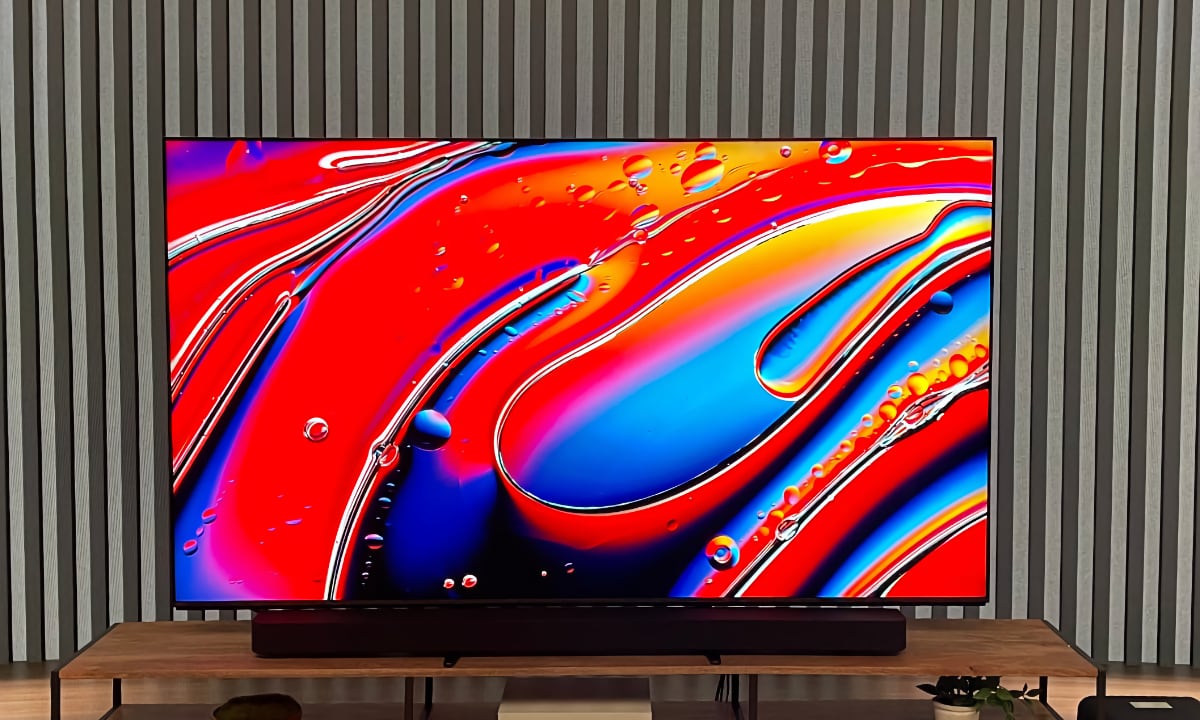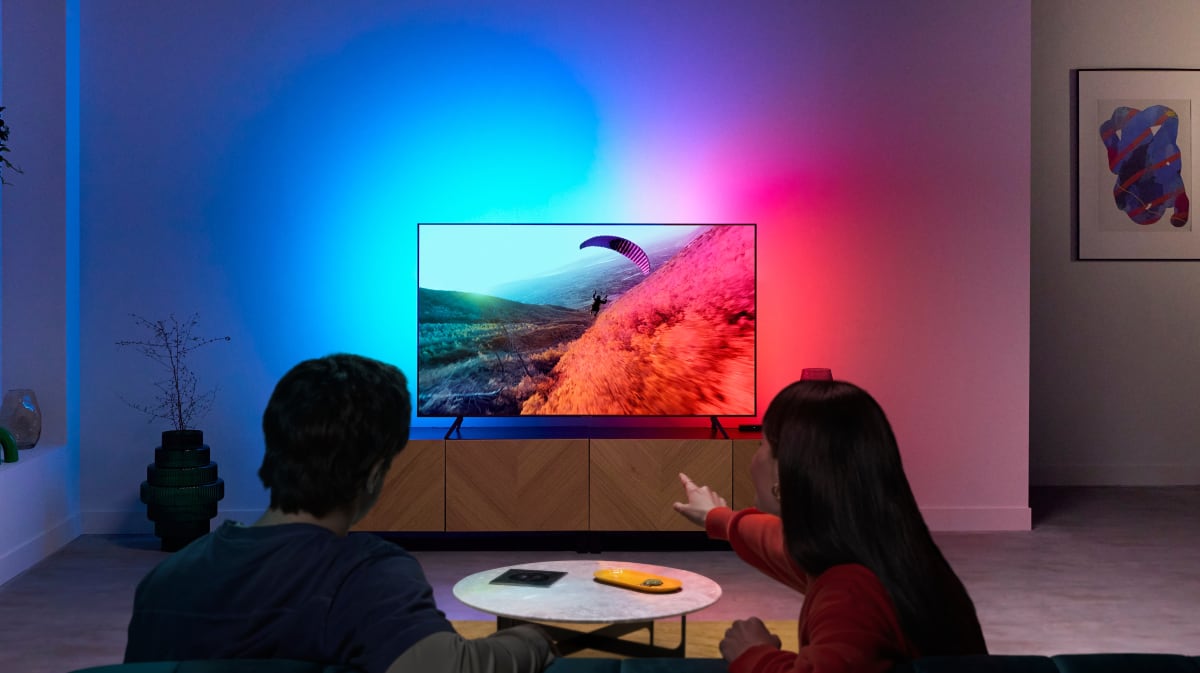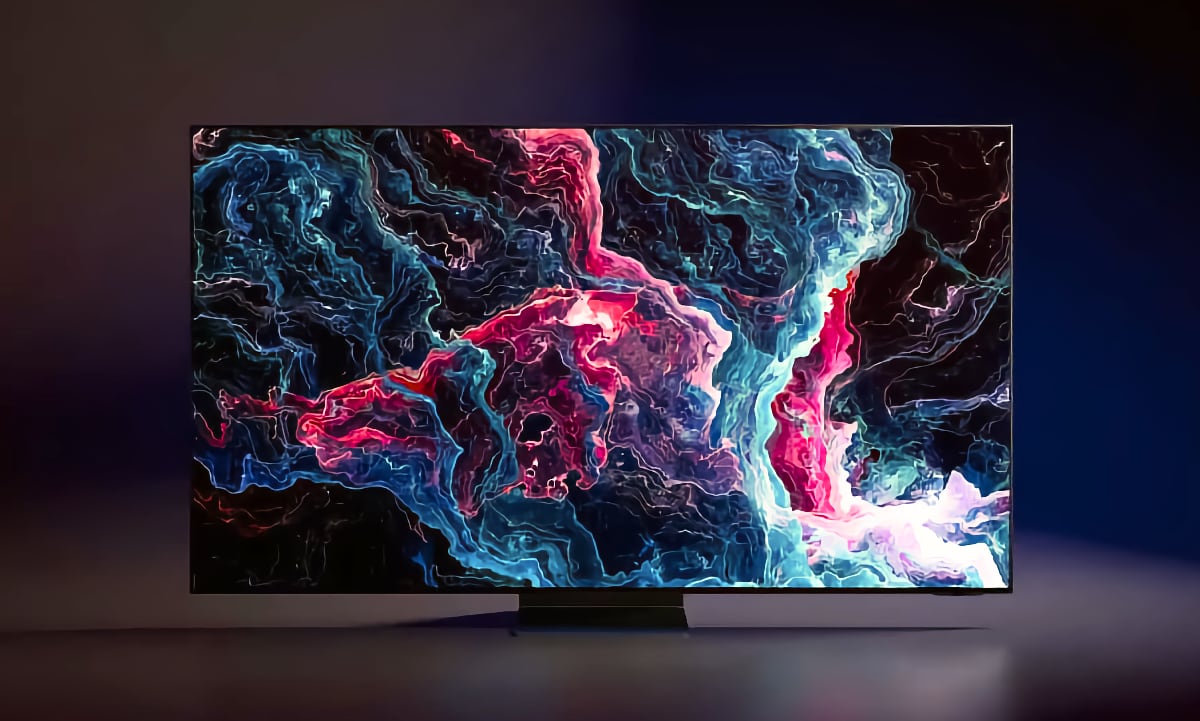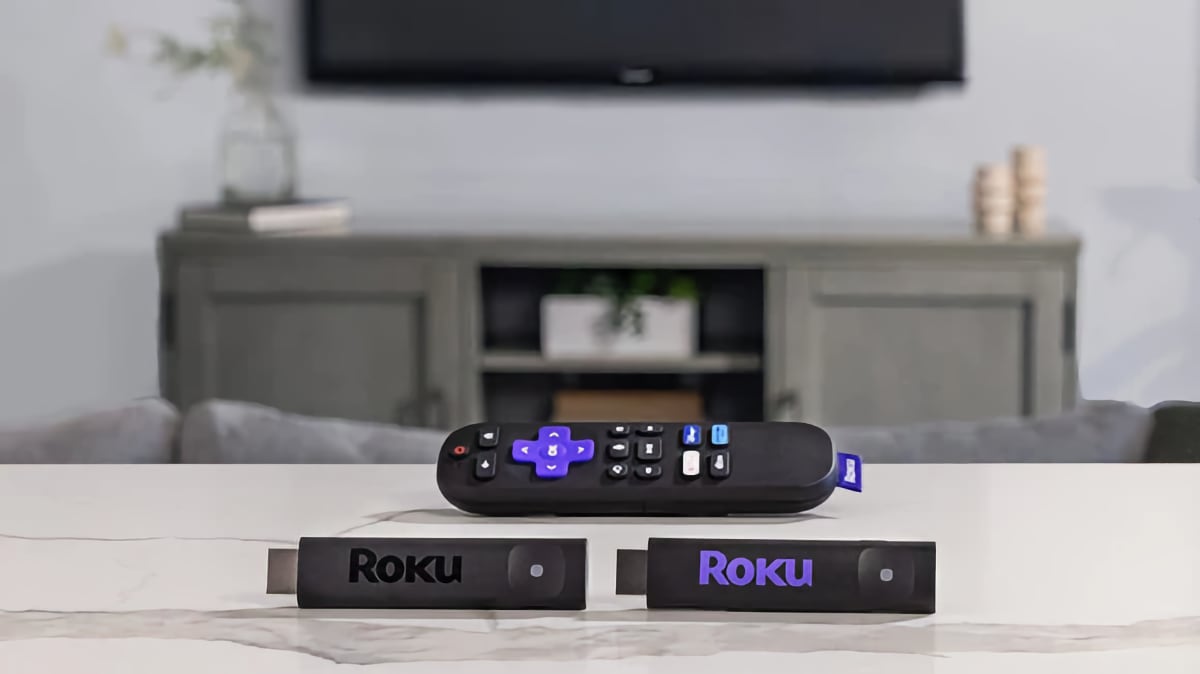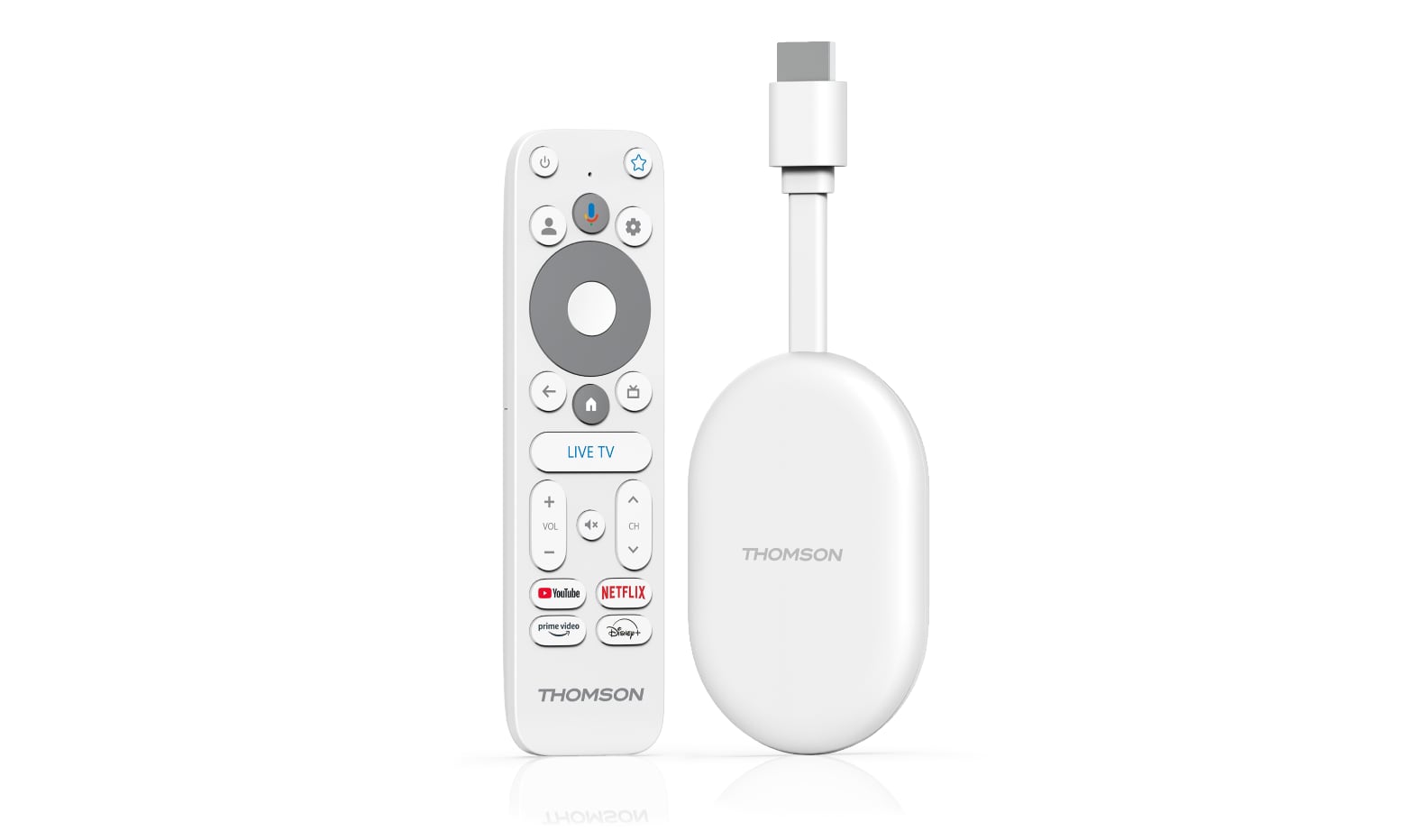Sony's next-generation Bravia 9 miniLED LCD features significantly more dimming zones, while miniLED now extends down to Bravia 7. There are also refreshed Bravia 8 OLED TVs. FlatpanelsHD brings you an in-depth preview.
In January 2024, FlatpanelsHD brought you a sneak peak of Sony's next-generation miniLED LCD technology, which we described as a significant leap forward for Sony's miniLED LCD technology.
Today, FlatpanelsHD can publish the details of Sony's 2024 TV ranges along with an exclusive preview of the new Bravia 9 (miniLED LCD), Bravia 8 (WOLED) and Bravia 7 (miniLED LCD) ranges from a launch event in Los Angeles, where the TVs were launched under a new slogan; "Cinema is Coming Home".
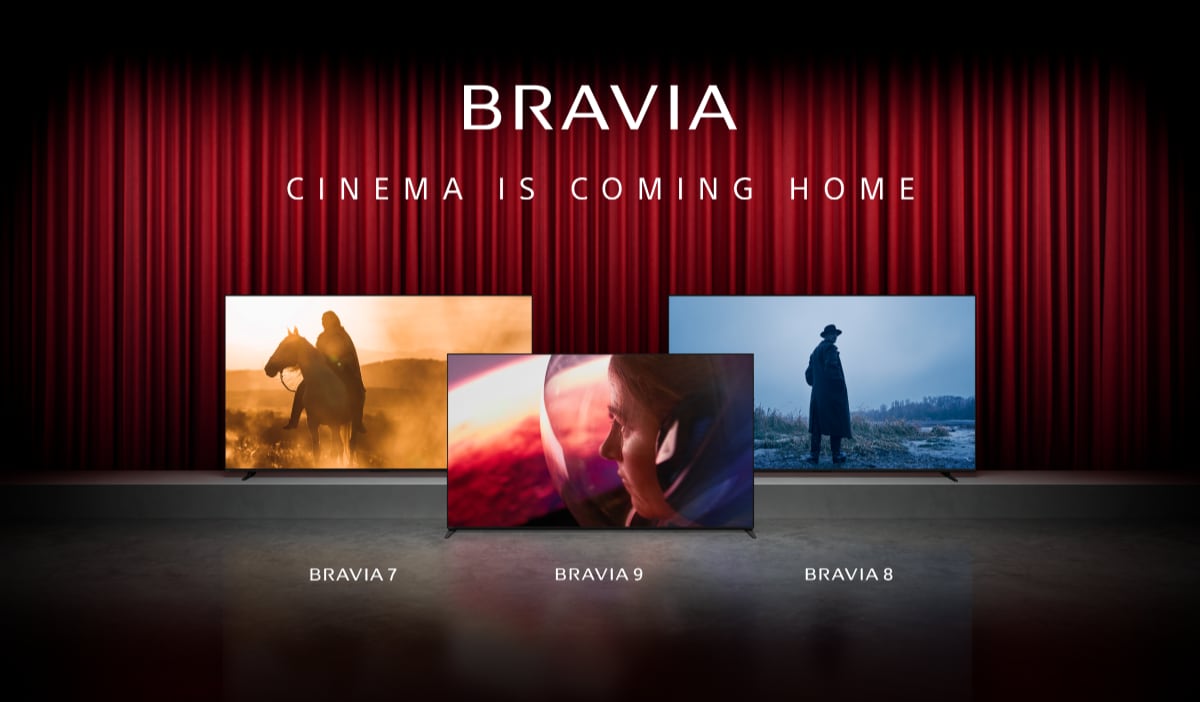
Sony is launching its 2024 TV line-up under a new slogan; "Cinema is Coming Home"
As always, you can find technical specifications in the TV Database or by clicking on the model names below. We will provide an overview of Sony's 2024 TV models in an upcoming article, so here we will focus on our first impressions and technical details.
Also read: Sony set sights on 4000 nits as HDR's next frontier
Sony 2024 TV ranges
| Bravia 7 (XR70) | Bravia 8 (XR80) | Bravia 9 (XR90) |
|---|
| Display tech. | VA LCD | WOLED | VA LCD |
| Backlight | miniLED
XR Backlight Master Drive | - | miniLED
XR Backlight Master Drive |
| Resolution | 4K | 4K | 4K |
| Video processor | 2nd Gen XR Processor | 2nd Gen XR Processor | 2nd Gen XR Processor |
| HDMI 2.1 | 2x
(4K120, VRR, ALLM) | 2x
(4K120, VRR, ALLM) | 2x
(4K120, VRR, ALLM) |
| OS | Google TV | Google TV | Google TV |
| Smart | AirPlay 2, Apple Home, Chromecast | AirPlay 2, Apple Home, Chromecast | AirPlay 2, Apple Home, Chromecast |
| Speakers | Acoustic Multi-Audio | Acoustic Surface Audio+ | Acoustic Multi-Audio+ |
| Sizes | 85, 65, 65, 55" (UK only) | 77, 65, 55" | 85, 75, 65" (excl. Europe) |
FlatpanelsHDBravia 9 is next-gen miniLED LCD
Everything we shared in January in our sneak peak article of Sony's next-generation miniLED LCD technology relate to the new Bravia 9. This model represents a significant step forward for miniLED technology. It features a 22-bit miniLED driver, a VA LCD panel with 4K resolution, quantum dots, up to 325% more dimming zones, and up to 50% higher brightness compared to last year's X95L, according to Sony.
Bravia 9 is powered by the enhanced XR Processor, which was first introduced late last year in A95L (QD-OLED) with certain AI-powered video algorithms. Sony continues to refer to the enhanced miniLED backlight as 'XR Backlight Master Drive', and confirms that its anti-reflection (X-Anti Reflection) and wide angle (X-Wide Angle) technologies are still implemented. Additionally, it introduces two new audio technologies, which we will delve into shortly.
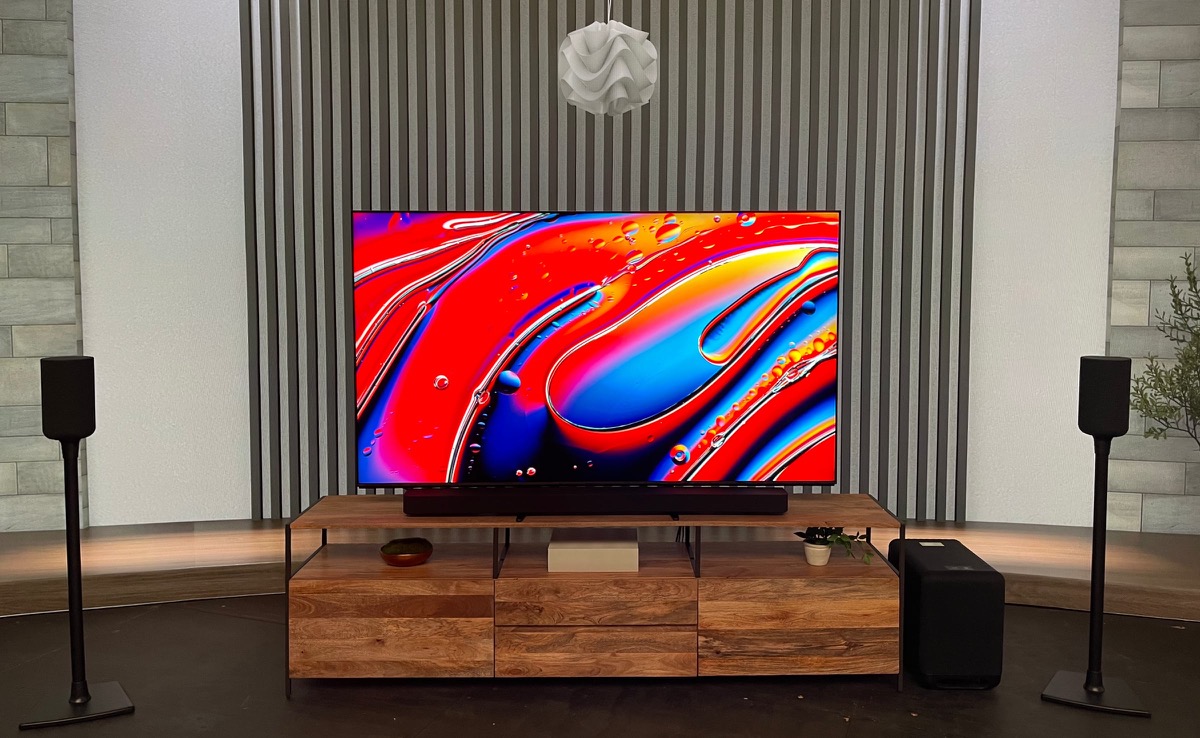
Sony Bravia 9 (XR90). Photo: FlatpanelsHD
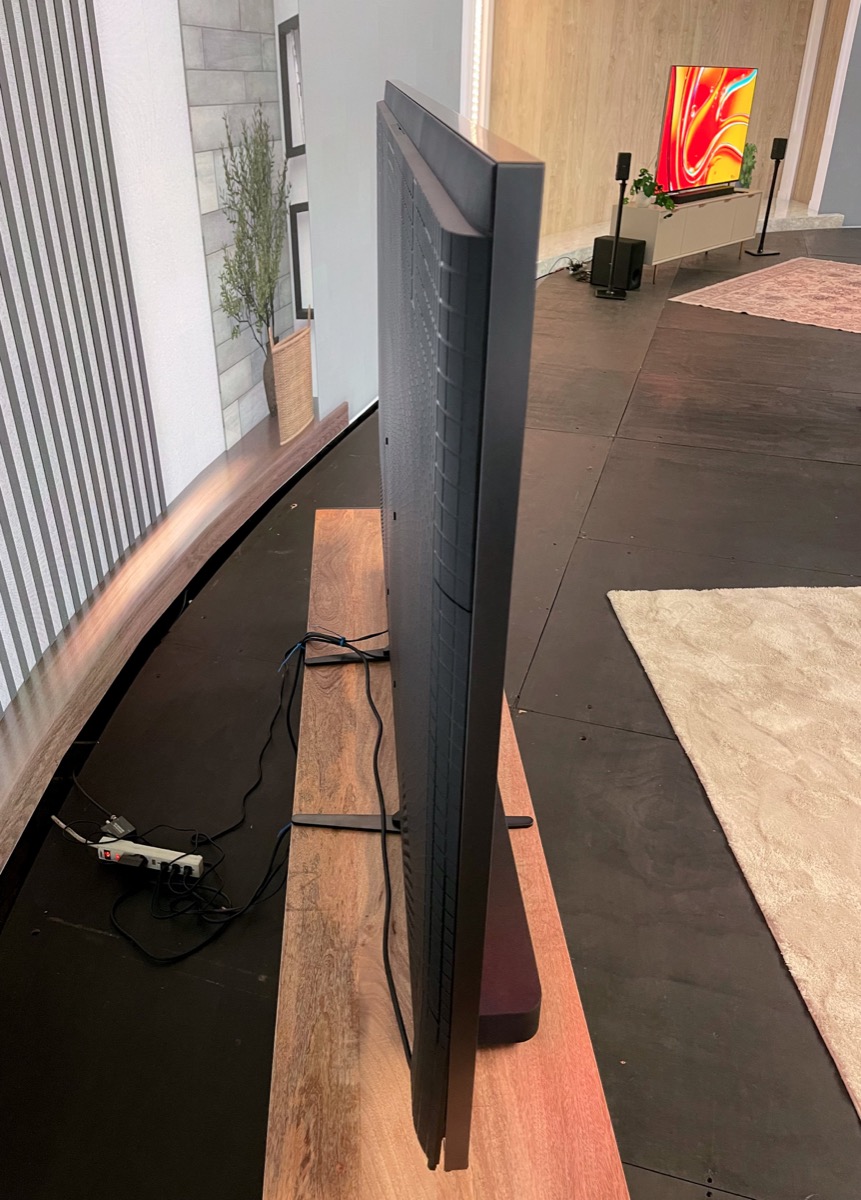
Sony Bravia 9 (XR90). Photo: FlatpanelsHD
Bravia 9 will come in sizes of 65, 75 and 85 inches, yet surprisingly Sony has opted not to launch the 65-inch variant in Europe. This decision seems counterintuitive, given that Americans in general typically buy larger TVs than Europeans. Sony justified this decision by noting that Europeans still have the 65-inch A95L (QD-OLED) and 65-inch option as part of the new Bravia 7 range.
This leads us to two significant points. Firstly, Sony is restructuring its TV lineup and model nomenclature in 2024, resulting in fewer new models as several 2023 models carry over into 2024. Carrying over models is really not particularly noteworthy as Sony has a history of doing so with flagship OLED and LCD models like A90J, Z9K (8K) and A90K. The latter two will by the way also carry over into 2024.
Is Sony abandoning OLED technology for its flagship TVs, as some have speculated? No, the company stressed. The A95L QD-OLED will carry over into 2024, but in Sony's view it is basically a 2024 model. It was prioritized by Sony – launched in late 2023 – to be the first TV built on the new SoC and hardware platform (Pentonic), which is only now being integrated into the 2024 models. Sony said that it will continue to offer both LCD and OLED flagships, but if you look at the model numbering, A95L retains a higher number than the new Bravia 9 (XR90).
How many dimming zones in Bravia 9?
Sony argues that there are 3 components to great local dimming, miniLED or otherwise. While we acknowledge that quality outweighs sheer quantity, our extensive TV testing over the years has consistently shown that the number of dimming zones remains the most critical factor in advancing picture quality on LCD TVs.
Sony declined to reveal the precise number of dimming zones in Bravia 9, stating only that it offers "up to approximately 325% more dimming zones than the 2023 X95L" or the simpler "3x more" than X95L. This represents a substantial increase compared to last year's model (X95L boasted "up to 20% more" than X95K). FlatpanelsHD has some educated guesses:
Sony miniLED LCD TVs – zone estimates
| X95K | X95L | Bravia 9 (XR90) |
|---|
| 65" | 432 | 480 | 1440? |
| 75" | 600 | ≈700 | 1920? |
| 85" | 768 | 864 | ≈2800? |
FlatpanelsHD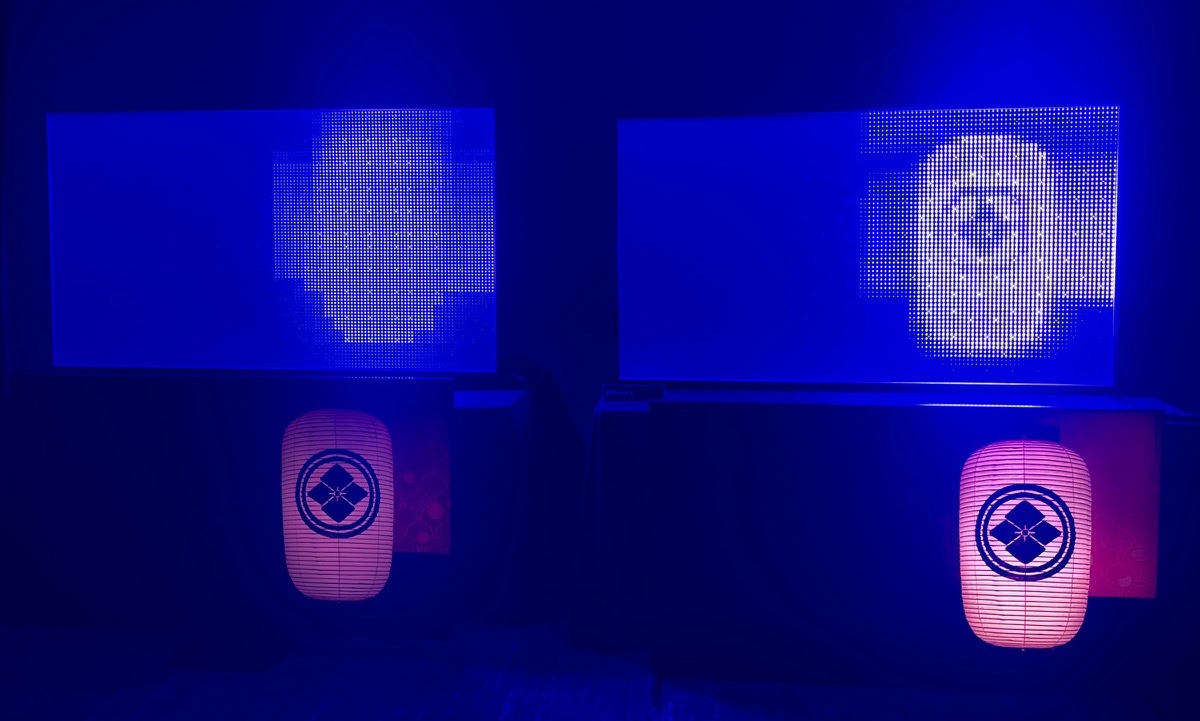
The exposed miniLED backlight of Samsung's 'Neo QLED' (left) vs. Sony's Bravia 9 (right). Notice the differences in zone dimming. Photo: FlatpanelsHD

The exposed miniLED backlight of Samsung's 'Neo QLED' (left) vs. Sony's Bravia 9 (right). Notice the differences in zone dimming. Photo: FlatpanelsHD
Sony Bravia 9 in action, with half the screen showing the image and the other half showing how the miniLED zone dimming system works. Video: FlatpanelsHD
First look at Sony Bravia 9
The increased number of dimming zones represents a significant leap over last year's X95L, which is consistent with what we observed in terms of zone control during our demos. We were not permitted to photograph sessions with real content, but we saw significantly reduced blooming compared to X95L. Still, Bravia 9 cannot claim to be free of blooming around bright objects, especially red ones for some reason. It makes perfect sense given that there are still only a few thousand dimming zones employed to illuminate several million pixels.
Bravia 9 also delivered significantly higher brightness levels than X95L, especially in the areas of the picture where it matters most (small segments), due to the increased number of zones. Sony had placed an earlier 8-series OLED TV (WOLED) next to X95L and Bravia 9, and while it may not come as a surprise to avid readers, the differences were clear. Bravia 9 (and X95L) achieve higher brightness in full-screen and in mid-sized segments of the picture. However, the OLED still offers superior and more accurate luminance control, resulting in highlights that pop and sparkle more in other scenes. While still impressive, Sony's 8-series OLED has also been surpassed by both MLA OLED and QD-OLED technologies, so it is not the best reference here.
In another demonstration Sony dared to compare Bravia 9 (and X95L) to Samsung's S95C QD-OLED from 2023. This session focused on color accuracy compared to Sony's own 4000-nit reference monitor, BVM-HX3110. It was clear that Sony's TVs were more faithful to the source in terms of color accuracy compared to Samsung's TV, which took some... liberties
Also read: Samsung caught cheating in TV benchmarks, promises software update
Nevertheless, the QD-OLED panel still offered advantages over Bravia 9. For example, in a particular scene where bright reflections were cast on a car's surface, the car and its surroundings looked more realistic on Samsung's QD-OLED. In another scene, the orange paint of a car was noticeably more orange on Samsung's display, which is possible because QD-OLED has a wider coverage of the Rec.2020 color gamut compared to both Sony's Bravia 9 and BVM-HX3110 reference monitor. However, we confirmed with Sony's engineers that the intended orange hue matched that of BVM-HX3110 – and to a large extent Bravia 9 – as BVM-HX3110 has a feature to indicate if colors in the input signal exceed its DCI-P3 color coverage. The orange hue did not exceed this range, meaning that Samsung's QD-OLED was not accurate but simply boosted the orange.
Another significant takeaway from these demonstrations, which were based on content mastered to 4000 or 10000 nits (Gran Turismo 7), was that Bravia 9 does not appear to reach the same high peak brightness levels as Sony's 4000-nit BVM-HX3110 reference monitor. We still do not have any concrete numbers on Bravia 9's peak brightness, but Sony stated that it is "up to approximately 50% brighter than the 2023 X95L model", which indicates that peak brightness is around 2500 nits, given that X95L typically reaches around 1600-1800 nits on a 10% window. However, it is possible that Sony is using another reference than a 10% window. Nevertheless, this theoretical peak brightness may not translate to real content, especially for gaming (in Game mode). Therefore, we will reserve our judgment until we have the opportunity to review Bravia 9.
As discussed in our other article today, Sony has set its sights on 4000 nits as HDR's next frontier. The company is advocating for Hollywood to begin producing and mastering content with up to 4000 nits peaks. Bravia 9 is positioned as Sony's first consumer miniLED LCD TV to embark on this multi-year journey toward 4000 nits. Meanwhile, there are indications that MLA OLED and QD-OLED TVs may actually also achieve 4000 nits in the near future. Competition benefits consumers!
Lastly, I would like to comment on the new audio features and hardware of Bravia 9, particularly the Acoustic Multi-Audio+. For the first time, Sony incorporates both up-firing and side-firing speakers for Dolby Atmos in a TV. The other notable new feature is Voice Zoom 3, which uses AI to isolate human voices to let the viewer increase or decrease the volume from the user menu.
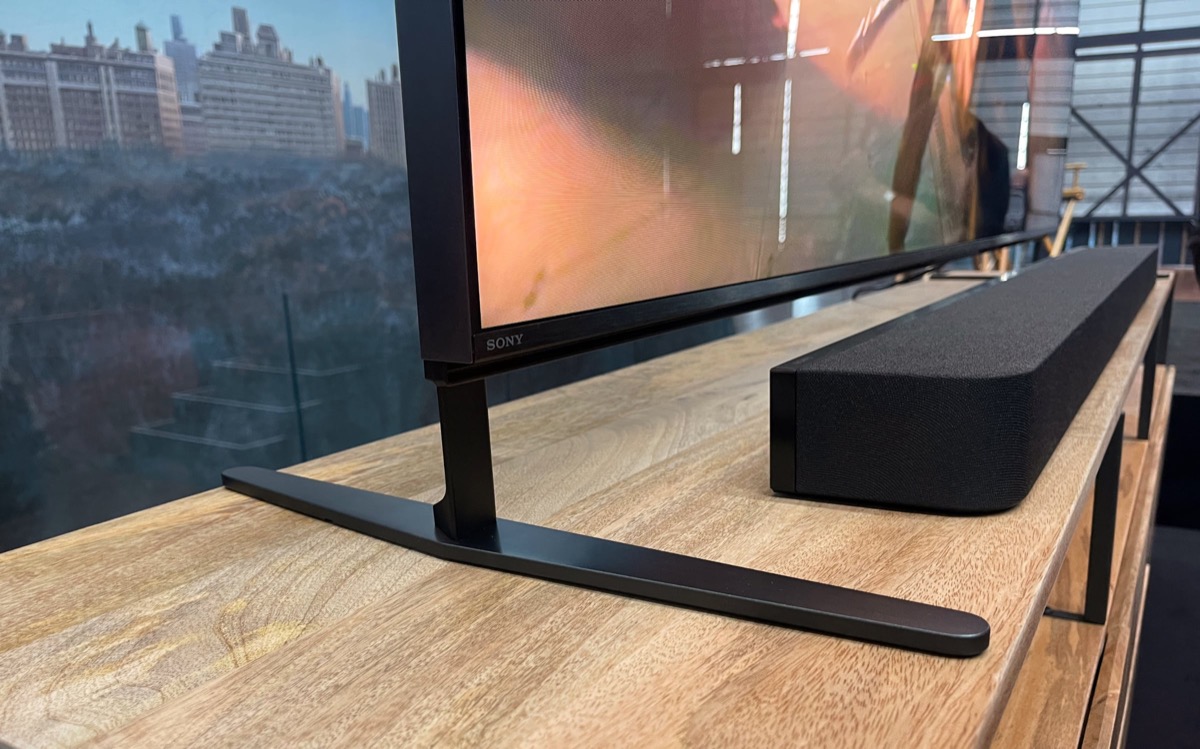
Sony Bravia 9 (XR90) and the new Bravia Theatre Bar 9. Photo: FlatpanelsHD
I discussed the convincing Voice Zoom 3 feature in my article about Sony's 2024 audio line-up, so here I want to focus on Acoustic Multi-Audio+ that is exclusive to Bravia 9 and which I first experienced last year in Tokyo. Having heard up-firing speakers in TVs before, I was pleasantly surprised by Sony's implementation where the beam tweeters proved effective for overhead effects within the tweeters' operating range. During Dolby's rainforest Atmos demo, we could actually hear rain overhead, while the side-firing tweeters widened the soundstage, although the room had a perfectly square layout with a flat ceiling. This is something we are eager to explore in more detail once we get our hands on a review sample.
Sony added that with the 2024 TVs, it is possible to use the TV speakers and Bluetooth headphones simultaneously. The TVs still support Acoustic Center Sync, allowing the TV to function as a center speaker in conjunction with a compatible Sony sound system. A new Bravia Connect app enables users to adjust audio settings and other TV features directly from a smartphone, pending a firmware update.
First look at Bravia 8 and Bravia 7
Sony's 2024 Bravia 8 (OLED) and Bravia 7 (miniLED VA LCD) have fewer noteworthy features to discuss. Bravia 8 still relies on LG Display's standard WOLED panel (not MLA) so it is expected to offer largely similar performance to A80L and previous 8-series OLED TVs from Sony. However, Sony anticipates a 10% improvement in brightness compared to A80L.
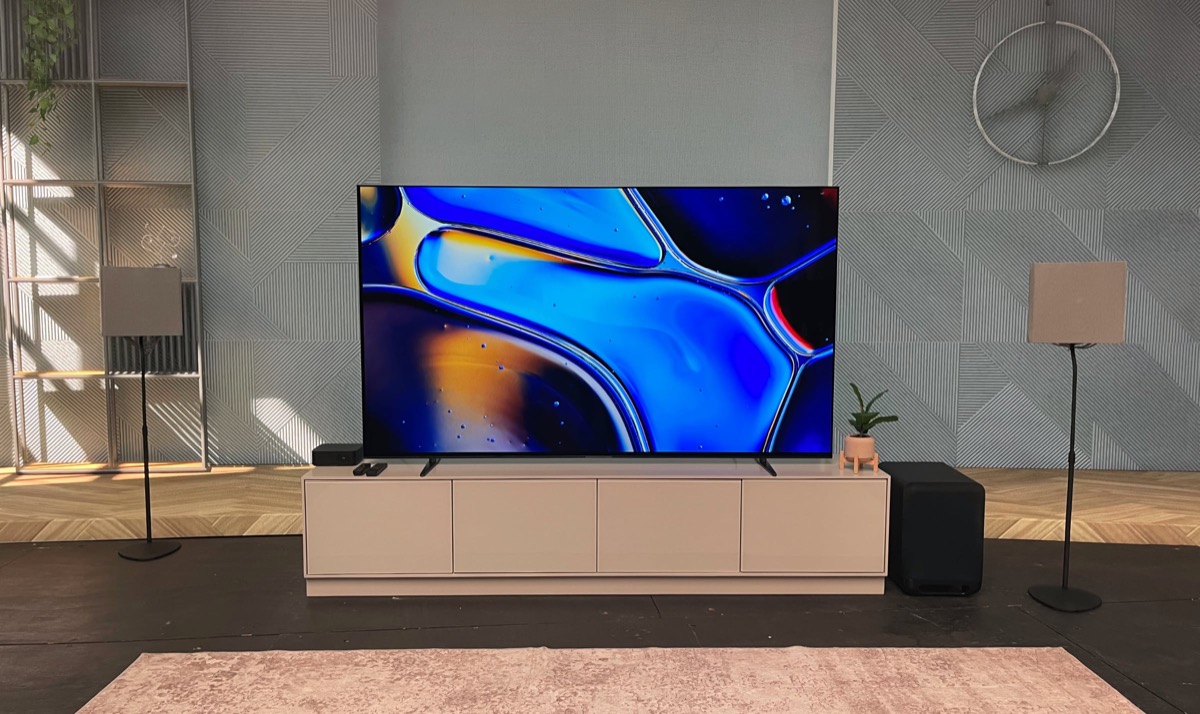
Sony Bravia 8 (XR80). Photo: FlatpanelsHD
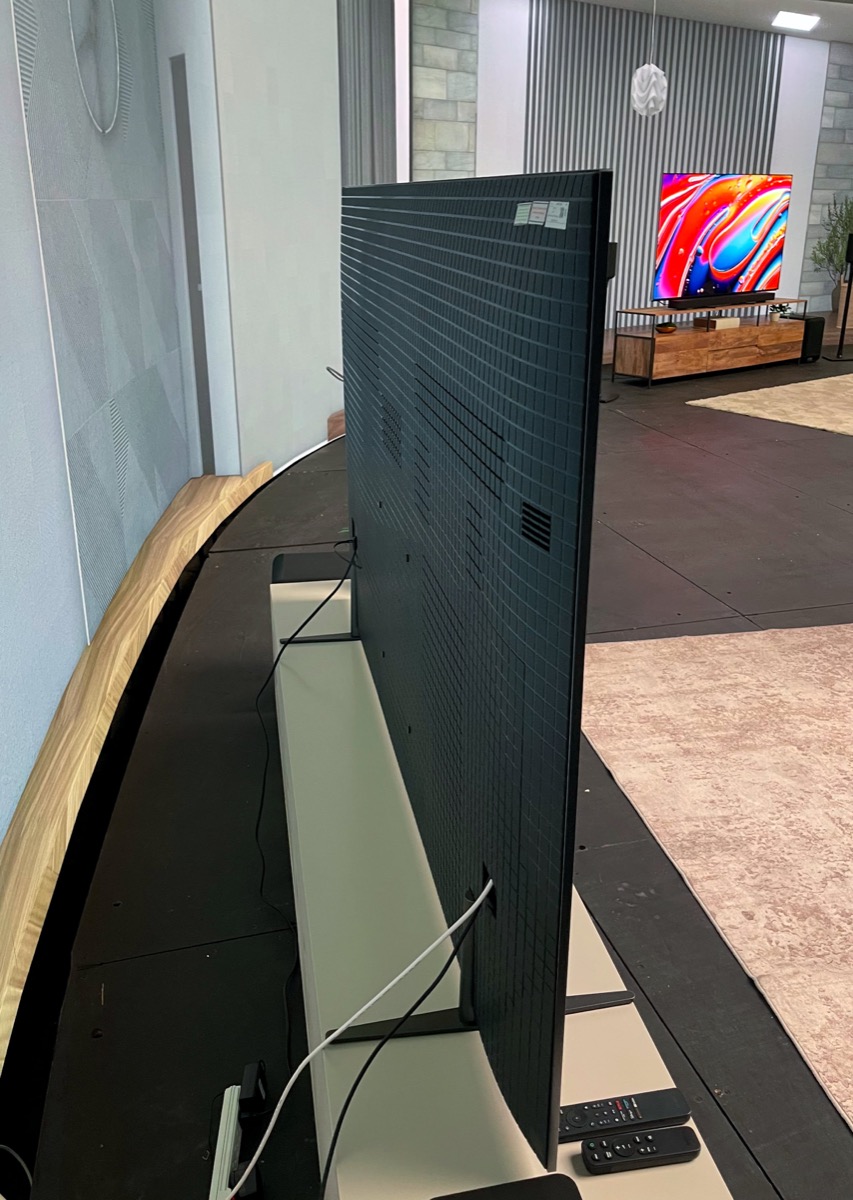
Sony Bravia 8 (XR80). Photo: FlatpanelsHD
With Bravia 7, Sony is bringing down miniLED LCD technology to a slightly more affordable price range for the first time. The company confirmed to FlatpanelsHD that Bravia 7 delivers similar picture performance to X95L, which suggests that it uses the same miniLED backlight or one that is similar. Sony claims it has up to 8 times more dimming zones than X90L, which will continue to be available in 2024, supporting this assertion.
During a demonstration of Bravia 7, it exhibited picture performance similar to X95L, including noticeable blooming in some scenes. It was also compared to Samsung's QN85C, which it far outperformed – hardly surprising considering the IPS LCD panel in QN85C.
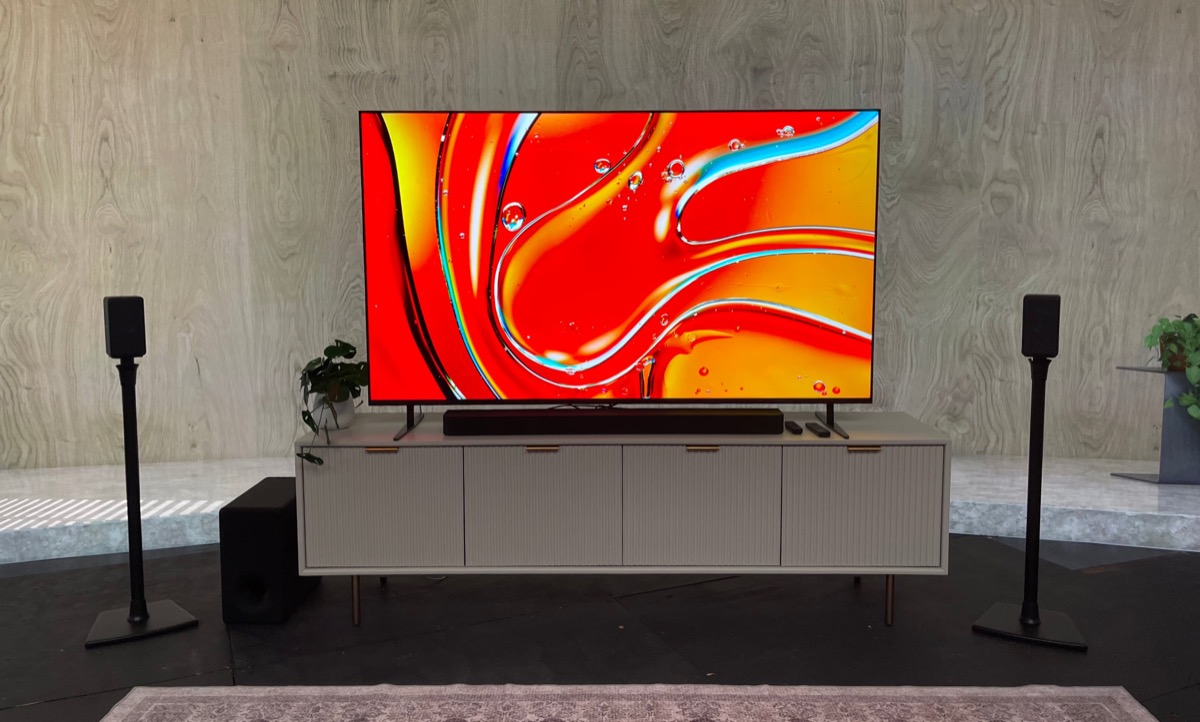
Sony Bravia 7 (XR70). Photo: FlatpanelsHD
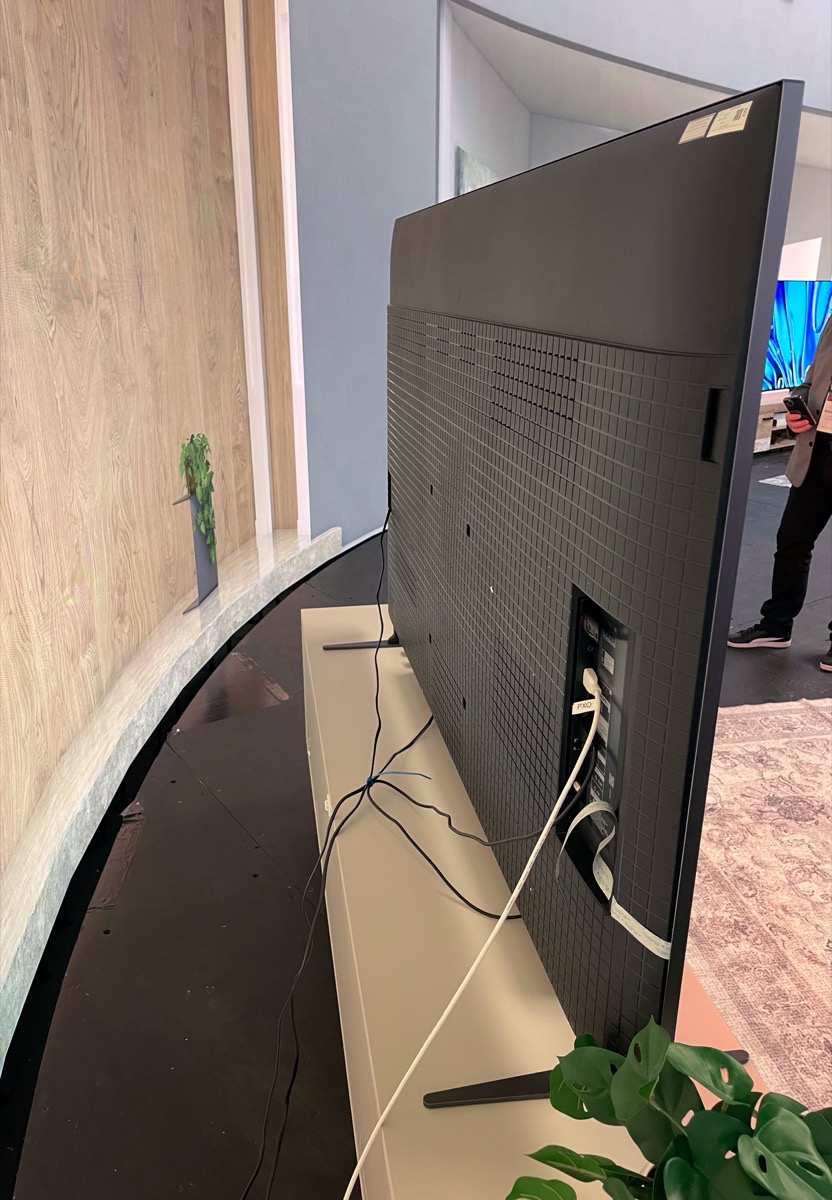
Sony Bravia 7 (XR70). Photo: FlatpanelsHD
Sony highlighted the improved face and scene detection capabilities of its enhanced XR Processor, which is also implemented in Bravia 8 and 7, but as noted previously these were first introduced in late 2023 in Sony's A95L QD-OLED with the new hardware platform.
Lastly, Sony will offer a Bravia 3 LCD range with 4K resolution, but it will be limited to select regions such as North America. It will not be available in Europe.
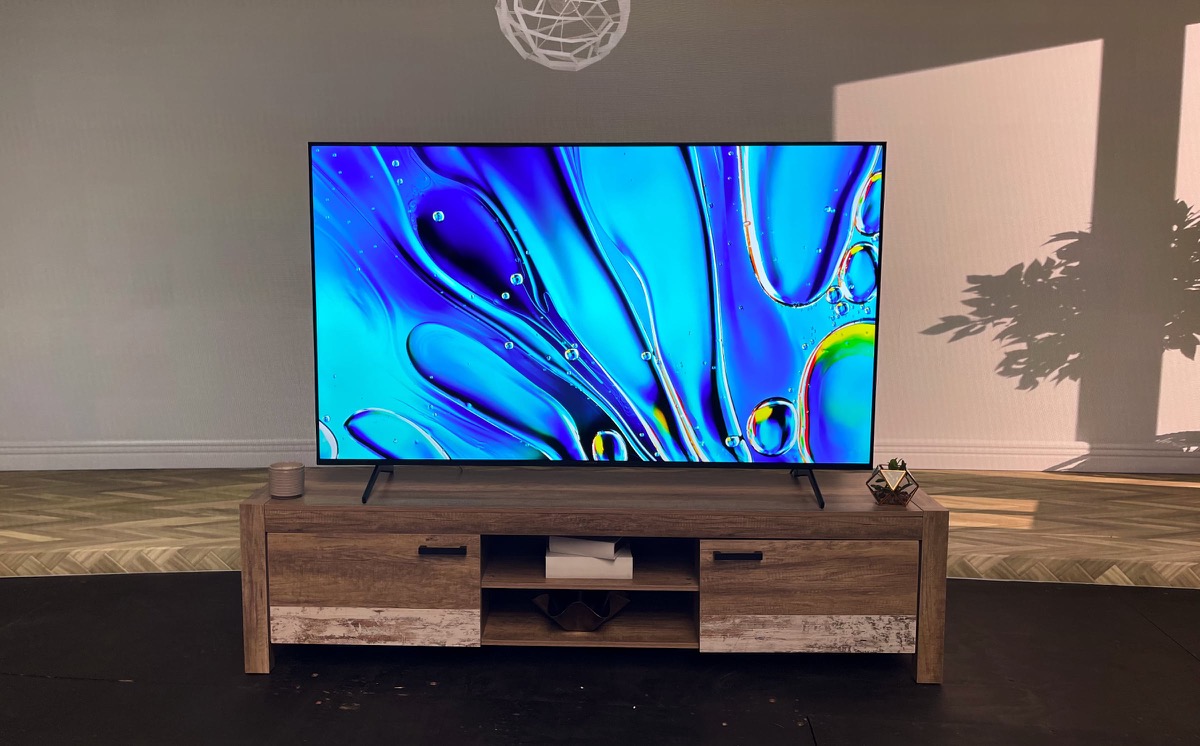
Sony Bravia 3. Photo: FlatpanelsHD
Dolby Vision 120Hz, Eco Dashboard 2
An updated Eco dashboard will provide users with better insight into power consumption this year, although the consumption level presented is an estimate rather than the actual power draw. Sony emphasized that the new miniLED backlight in Bravia 9 is notably more energy efficient.
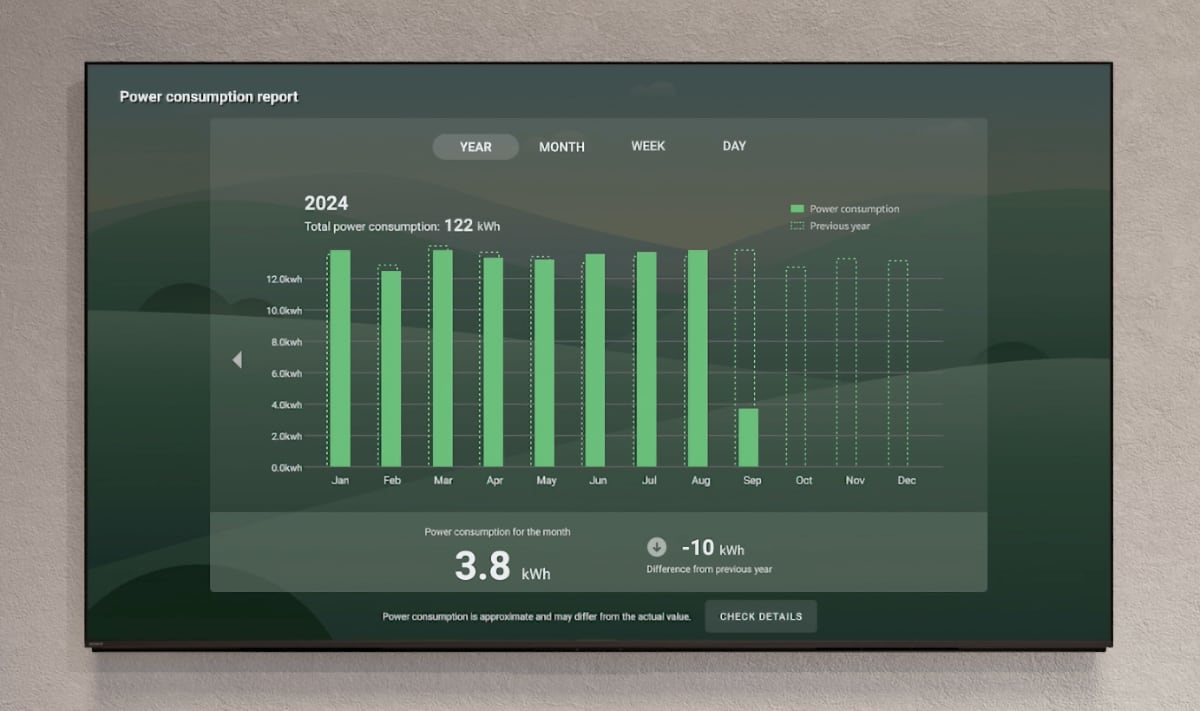
Sony's new Eco Dashboard provides an estimate of power consumption. Photo: FlatpanelsHD
As previously announced, the Bravia Core app will change name change to Sony Pictures Core but will otherwise remain identical. Last year, it was expanded to include Dolby Atmos, but the standout feature remains 'Pure Stream' with up to 80 Mbps video bitrate for streaming movies – more or less the same as UHD Blu-ray. Unfortunately, Sony's TVs are still limited to 100 Mbps Ethernet, so users must utilize either a USB Ethernet dongle or WiFi due to overhead to enjoy the 80 Mbps bitrate level.
Similar to the flagship A95L, Dolby Vision is now supported up to 120Hz from Bravia 7 and up. However, there are still only two HDMI 2.1 ports in Bravia 7, 8, and 9. All models support HDR10, HLG and Dolby Vision, but Sony is still shying away from HDR10+. Dolby Atmos is also supported.
The new models continue to run Google TV with built-in Google features such as Chromecast. On top, there is support for Apple Home and AirPlay 2.
In addition to the Netflix and Sony Pictures Core calibrated modes, Sony is implementing a Prime Video Calibrated Mode, which we will delve into further later this week.
Sony's 2024 TVs will be available starting in May/June.
Sony 2024 TVs – full specifications
FlatpanelsHD

